How Dabble Can Help You Write Faster, Better, and More Successfully

As writers, we have big goals. Massive goals.
Some dream of writing a novel that rises above millions of others to become a bestseller or leave a legacy. Others just want to land a deal with a publishing house or complete the huge project of self-publishing.
And some are focused purely on overcoming the limitations of written language to communicate the complexity of the human experience in a way that resonates with others. (Total breeze, right?)
Even when we try to keep our objectives simple, we’re still striving for something remarkable.
Dabble was designed by a writer who understands the journey. That’s why this tool has so many features that not only help you write a book but also improve your process and craft, drawing you closer to the vision that keeps you motivated.
You’re about to get a quick tour of Dabble’s key features and how you can use them to supercharge your writing routine. You’ll discover tools for:
- Writing better
- Writing faster
- Focusing better
- Writing a book that sells
First, let’s take a look at the big picture.
Real Quick: What is Dabble, Exactly?

Dabble is a comprehensive writing program with features that simplify every stage of the novel writing process, from brainstorming to final revisions. (You’ll see what I mean by this as we go on.)
You can use Dabble as a web-based app or download it on any device. It works both online and off, with auto-saving and syncing features to ensure you never lose a word of brilliance.
Without question, all of Dabble’s features create a more convenient writing experience. But they also invite you to think more strategically about story development, commit to a writing routine, focus more intently, and strive to become a better writer every day.
Features for Writing Better
I’ve found that the best novel writing programs are the ones that help you think more strategically about your story. They nudge you to structure with purpose and go deeper on character and world development. They also have tools for analyzing and perfecting your prose.
I chose Dabble years ago because it meets these needs particularly well. Here’s how:
Strategize Story Elements With the Plot Grid
The task of storytelling seems simple enough at first. You’ve got a protagonist with a goal. To achieve the goal, they have to overcome the obstacle. In the end, they succeed or they don’t, and ideally your readers cheer or weep with joy or spend the next three days under a blanket, utterly inconsolable—whatever you’re going for.
But then you remember that your protagonist needs a backstory. So does the antagonist. Subplots enter the picture. Next thing you know, you’re juggling themes and symbols. You’re worrying about pacing and flow.
Now this “simple story” is just one violent tangle of inspiration and you have no idea if any of it works.
Enter the Plot Grid:
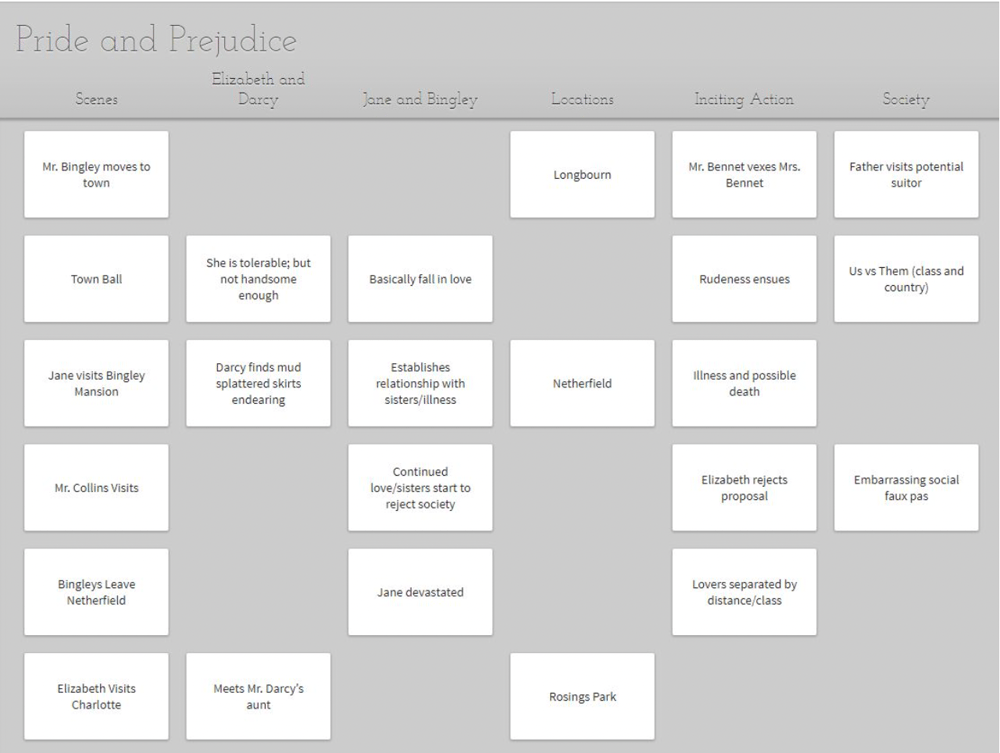
With this tool, you can track any and every element of your story right alongside your scenes. Add as many columns as you want and label them however you like.
The Plot Grid allows you to see your entire story at a glance. You can check for pacing, plot holes, and loose ends. You can review the distribution of characters, locations, and symbols. And you can make sure you’ve hit every beat of your chosen story structure.
Every card related to a scene is there at your fingertips while you draft your novel.
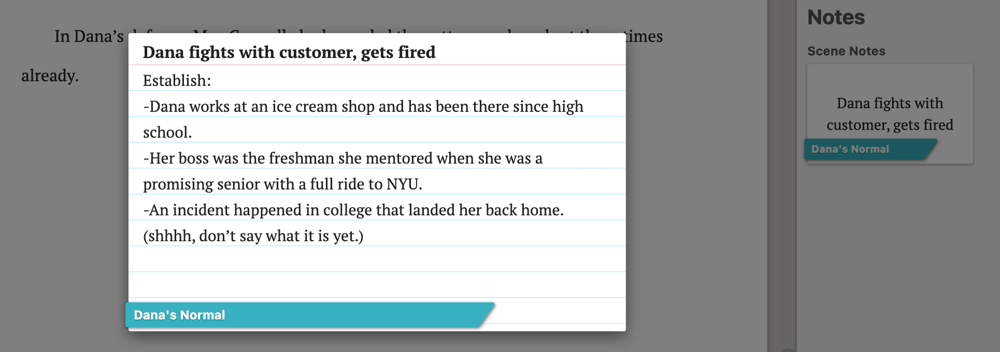
And because creating a new scene in your manuscript automatically generates a new card in the Plot Grid, pantsers can use this feature to analyze their story after they’ve written it.
Visualize More Clearly With Labels
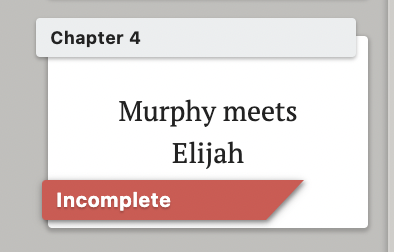
Dabble features color-coded labels as an extension of that whole “see your story at a glance” idea.
Which elements of your novel do you most need to visualize? The placement of legit clues and clever red herrings? The emotional flow of your story? Shifting points of view?
Assign colors to the details you want to track and label your Scene Cards accordingly. It’s the quickest, easiest way to make sure your story elements are working the way you want them to.
Stay Organized With Story Notes
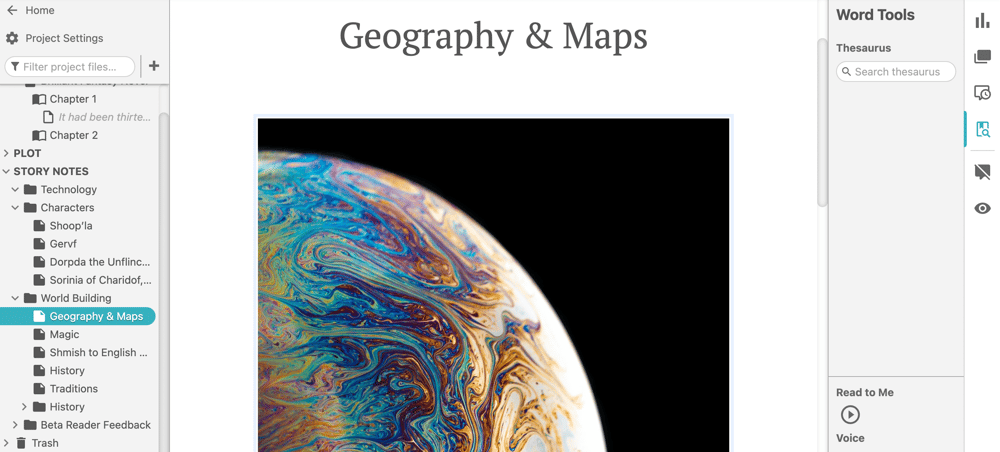
Story Notes are exactly what they sound like: notes about your story. They’re completely customizable, so you can use them to keep track of research, develop character sketches, upload mind maps, create a worldbuilding bible… you name it.
I’ve found a lot of great writing programs that have a little too much built-in structure when it comes to their version of story notes. It’s a personal preference thing, but I enjoy being able to design Story Notes and organize folders my way.
Even better: I can even create templates when I find a system that works.
Think It Through With Comments

Comments allow you to leave, well, comments on your manuscript. As one might expect, this feature is handy when you’re working with a co-author. But I’m 99.99% certain I’m not the only writer who talks to themselves, so I consider this an essential tool for soloists, too.
I use comments most during the revision process, but they also come in handy when I make a mid-draft discovery that I can’t apply without breaking my flow. I also dart into my manuscript to leave a comment when a thought strikes me during my non-writing hours.
In other words, this feature helps you hold on to more bursts of inspiration and set reminders that you wanted to repair a plot hole or workshop a section of dialogue.
Sharpen With Style and Grammar Check
If you’ve ever toyed around with ProWritingAid, you know it’s a solid tool for ensuring your work is grammatically correct and stylistically sound.
ProWritingAid also happens to power Dabble’s built-in style and grammar check. When you write your novel in Dabble, you automatically have an extra set of (robot) eyes reviewing your work.
Sit Back and Listen With Read to Me

Reading your prose aloud is one of the best ways to check for… well, everything. Flow, pacing, readability, voice, tone, realistic dialogue, and probably about twelve other things. It’s also a great way to catch the errors your eyes have glossed over a hundred times. (Our eyes have a tendency to see what we meant to write rather than what we actually wrote.)
With Dabble’s Read to Me feature, you can go one step further and have your novel read to you by a pleasant, disembodied voice of your choosing. Just lean back, close your eyes, and listen.
Features for Writing Faster
Looking to rack up more words faster? Dabble can help you there, too.
Here are some of the program’s best tools for boosting word counts and increasing productivity.
Steer Towards Your Target With Goal Tracking
Dabble allows you to set goals by selecting the number of words you want to have written by a specific date. You can even plug in the dates you plan to take off and the system calculates a daily word count goal for you.
You can opt to keep the Goals & Stats tracker visible as you write—a constant reminder of how well you’re staying on course.

You also get a little confetti celebration every time you meet your daily word count. As someone who loves the dopamine rush only a good merit badge can provide, I can say that the promise of virtual confetti has pushed me over the finish line more than once.
So. Much. Dopamine.
Plan Faster With Templates

Dabble provides project templates for all the major fiction genres. Users also have the option to share templates or simply create templates for themselves.
From pre-structured Plot Grids to idea-sparking character profiles, a great template takes a lot of the guesswork out of shaping an engaging story.
Access Scene and Story Notes in One Click
Everything you need is always one click away from your manuscript in Dabble. Your Plot Grid, research notes, character histories, worldbuilding bible… it’s all right at your fingertips.
There’s no switching between programs, opening and closing windows, flipping through notebooks, or even turning from your screen to see your cork board. You can find the answers you need without breaking your focus and flow.
Work Anytime, Anywhere

Dabble works on any device as both a download and web-based app. It comes with cloud storage, syncs automatically between devices, and saves your work as you go.
This is huge if you’re someone who needs to squeeze writing sessions in while you’re waiting in the school pick-up line or on your lunch break. Whenever you have a chance to get more words in, Dabble’s there to back you up.
Collaborate in Real-Time With Co-Authoring
If you have a co-author, you know the clunky time-suck of sharing files, commenting, and tracking changes. Or you know that the seamless collaboration Google Docs offers feels less worth it when your manuscript reaches 40,000 words and the system starts to drag and glitch.
With Dabble, you can collaborate in real time on a program that was made to house entire series of epic fantasy novels.
Join Word Sprints
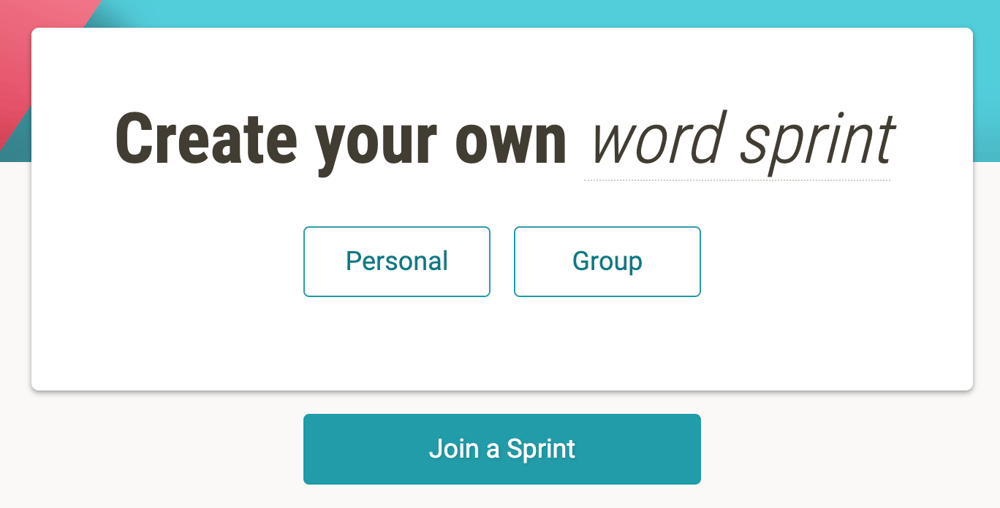
So here’s a fun thing: Dabble has its own writing community called the Story Craft Café. In that community, you can join or start free word sprints.
If you’re not familiar, a word sprint is when you type as much as you can within a set period of time without worrying about whether or not it’s good. It’s an effective strategy for blasting out more words and drowning out the voice of your inner perfectionist.
But there’s something even more motivating about participating in a sprint with fellow writers. You’re all in this mad dash together, and if they’re bringing everything they’ve got, you might as well do the same.
Features for Focusing Better
Got a distraction problem? Hey, me, too!
Here’s how Dabble helps:
Get in the Zone With Focus Mode

Dabble features an auto-focus mode that kicks in the minute you start typing your manuscript. Everything disappears except the words of your story. There are no toolbars cluttering your mind. No Story Notes beckoning you to add one more unnecessary historical tidbit to your worldbuilding bible.
It’s just you and your manuscript.
You have the option to turn this feature off if you don’t like it, but why wouldn’t you?
Soothe Your Eyeballs With Dark Mode
This is a personal preference thing, but I focus better in dark mode. It makes my mind all calm and quiet. So I’m happy to report that Dabble has it.
If you’re the type who only likes dark mode at night, you can opt to have Dabble shift to dark mode when the rest of your device does. And if you just like gray and white all the time, you can live that life, too.
The point is, you’ve got options.
Stay on Track With Sticky Notes

Sticky notes are exactly what they sound like: virtual Post-Its you can slap onto your manuscript anywhere you want.
For some, sticky notes is an editing tool or a way to communicate with a co-author. It’s the same for me, but my favorite use of this feature is to get a thought out of my head when it’s threatening to derail my focus.
“What if she raised elephants instead of emus?”
“Probably need a more compelling motivation to justify his choice here.”
“This scene is boring the life out of me.”
That sort of thing.
I just put it on a sticky note and let go.
Features for Writing a Book That Sells

If you’re thinking it’s absurd of me to claim that Dabble can help you find financial success as a writer, you’re mostly right. A very small percentage of authors make a living from their books alone, and even the cleverest writing app can’t change the statistics for you.
What Dabble can do, however, is provide tools and resources to help you write to market, sharpen your prose, and create the writing habits that lead to long-term success.
We’ve already explored several of the tools that help you do this. Templates make it easy to ensure you meet the expectations of genre readers. With the Plot Grid, you can craft an airtight story. The goal setting feature gives you a jumping off point for developing a consistent writing routine.
So what else is there? Quite a bit, actually.
Plan Your Series
When you write a series, you give readers a chance to get hooked on a world and characters they’ll want to return to time and again. In other words, a series can drive future sales more effectively than standalone books typically do. And because you’re usually working with the same universe and characters for each book, you can pump out future novels even faster.
That’s why it’s particularly handy that Dabble allows you to house multiple books within a single project. You can keep all your worldbuilding and character notes in one spot. Create a separate Plot Grid and manuscript for each book while previous novels and future outlines are only one click away.
Automatically Format Your Manuscript to Meet Industry Standards
If you plan to publish traditionally, you’ll need a manuscript that adheres to the formatting standards of the industry. Fortunately, Dabble does all the heavy lifting for you.
Export your novel as a Word document and it will automatically format to fulfill the expectations of most agents and publishing houses. (It always pays to check submission guidelines, however. You occasionally run into an agent or publisher who likes to do things differently.)
Find Support in the Story Craft Café

Dabble is more than a novel writing program. It also hosts the Story Craft Cafe I mentioned above. This is an online community where writers can share resources, discuss projects, and talk shop.
It’s tough to succeed as an island in this business. Our fellow writers help us polish our work, fill in our knowledge gaps, and keep us inspired when burnout threatens to creep in. Read any author’s acknowledgements section, and you’ll discover an entire army of fellow creatives who had their back.
Dig Into DabbleU
Finally, the most successful authors tend to be nonstop learners. They’re constantly refining their craft, and Dabble has created a robust library of articles, worksheets, and templates to help you sharpen your skills.
It’s called Dabble University, and not to alarm you or anything, but you’re in it right now. You can click here to explore it further. In DabbleU, you’ll find guidance on everything from fleshing out characters to making money as a writer.
Want a comprehensive how-to on planning, drafting, and revising a novel that rocks? Dabble has a free ebook that provides exactly that. You can download it here.
Bottom Line: Is Dabble the Answer to All Your Authorly Ambitions?
No, you are.
But if you can bring the passion and commitment, Dabble can help you stay on track, stay inspired, and meet your goals faster. It’s also just fun to use, and that’s a pretty big win in and of itself.
If you’d like to give this writing program a whirl, you can try it for free for 14 days. You don’t even have to enter a credit card. Just click this link and get started.
Even if you choose not to become an official Dabbler, you can still access all the free content in DabbleU and join the Story Craft Café. So don’t be a stranger. We’re all about the power of community, and we’re with you in this big, bold, reckless endeavor of yours.









